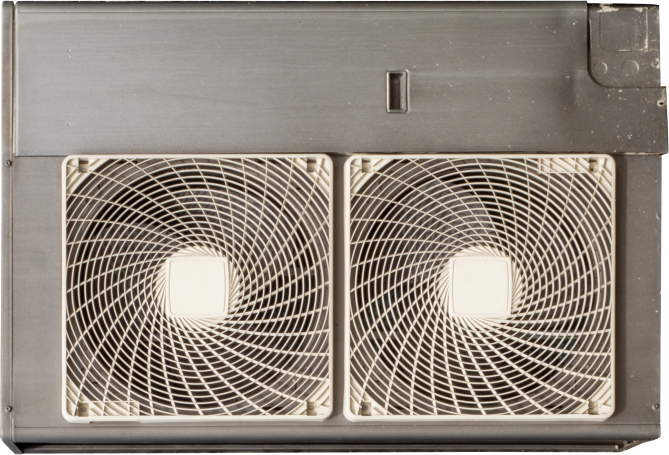

About us
About refrigerants
There's no doubt about it - refrigerants help us stay chilled. But not all refrigerants are created equal. Some occur naturally, while others are synthetically manufactured. Synthetic refrigerants (sometimes known as F-gases) damage the atmosphere when they leak or are released. Some are so destructive they're being phased out completely.
A refrigerant's environmental impact is measured by its ODP and GWP.
The lower, the better.
What are refrigerants?
Synthetic refrigerants (sometimes known as F-gases) are vital to our safety and wellbeing. They flow through our daily lives, from maternity ward to mortuary. And they’re invisible, odourless and generally harmless to people.
Synthetic refrigerant gases account for the majority of F-gases used in Aotearoa. When synthetic refrigerants are responsible for 2% of the country's annual greenhouse gas emissions, it's 2% too much. Most synthetic refrigerants are Hydrofluorocarbons (HFCs), which have high Global Warming Potential (GWP) but no Ozone Depletion Potential (ODP). Their predecessors (CFCs and HCFCs) have both high GWP and ODP, which is why Cool-Safe collects and destroys them.
What do refrigerants do?
Synthetic refrigerants (sometimes known as F-gases) are vital to our safety and wellbeing. They flow through our daily lives, from maternity ward to mortuary and they’re invisible, odourless and generally harmless to people.
Synthetic refrigerant gases account for the majority of F-gases used in Aotearoa. When synthetic refrigerants are responsible for 2% of the country's annual greenhouse gas emissions, it's 2% too much. Most synthetic refrigerants are Hydrofluorocarbons (HFCs), which have high Global Warming Potential (GWP) but no Ozone Depletion Potential (ODP). Their predecessors (CFCs and HCFCs) have both high GWP and ODP, which is why Cool-Safe collects and destroys them.
Natural vs. synthetic refrigerants
Some refrigerants occur naturally; others are synthetically manufactured. Natural refrigerants are more flammable while synthetic refrigerants are more stable, so there are pros and cons to both. However, unlike our more natural refrigerants, synthetic refrigerants damage the atmosphere if they’re leaking or released. They impact climate change - hugely.
Refrigerant legislation
New Zealand has ratified key global legislation on climate change and the environment:
Montreal Protocol (1987) – Regulates production and consumption of nearly 100 Ozone Depleting Substances (ODS). The only UN treaty ratified by all 198 Member States.
Kigali Amendment – Limits Hydrofluorocarbon (HFC) consumption, with import volumes decreasing over time.
Basel Convention (ratified 1994) – Reduces hazardous waste movement between nations, requiring onshore waste management wherever possible.
Ozone Layer Protection Regulations 1996 – Limits bulk HFC imports, supporting the Kigali Amendment.
Climate Change Response Act 2002 – Makes knowingly releasing synthetic greenhouse gases while working with refrigerant equipment an offence.
Priority Product Declaration (2020) – Synthetic greenhouse gases designated as priority products, requiring regulated Product Stewardship.
Greenhouse gas or Fluoro-Gas (aka F-gas)?
Synthetic refrigerants are measured in terms of Ozone Depleting Potential ( ODP) and Global Warming Potential (GWP). The lower the number for ODP and GWP, the better for the planet. And don't forget, some refrigerants are natural.
Chloro Fluoro Carbon (CFC)
Hydro Chloro Fluoro Carbon (HCFC)
Hydrofluoro Carbons (HFC)
Driving changes to refrigerants
The Montreal Protocol and Kigali Amendment have driven refrigerant changes across New Zealand. HCFCs have been largely replaced by HFCs, which will in turn be replaced by HFOs as Kigali is implemented.
Adapting destruction processes
As part of the recovery and destruction process of synthetic refrigerants, a sample of each cylinder is taken, allowing us to see the types of refrigerants being destroyed.
Certain molecules, such as 143a and R32, are flammable in high enough concentrations. As the proportions of these molecules increase in the mix being collected and destroyed, we'll continue to adapt to maximise recovery and destruction.
As the proportions of these molecules increase in the mix being collected and destroyed, further investment in infrastructure will be required so we can manage the changing risk profile of the operation.
The difference being made
Since 1999, the collective efforts of the HVACR industry recovering refrigerant through Cool-Safe recovery programmes, have prevented the release of 38,551 tonnes of Ozone Depleting gases and 1,437,500 tonnes of Global Warming Potential gases into the atmosphere.
Collective effort for change
People don’t know enough about synthetic refrigerants and their dangers. Appropriate government regulation is lacking. Then there’s bad practice – accidental or deliberate leaks and releases, often from poor installation or shoddy maintenance of refrigerant-bearing equipment.
Big or small, these leaks are always harmful to the environment. And every year, only 8% of recoverable synthetic refrigerants are properly recovered. If a kilo of certain heat-pump refrigerant escapes, that's the same impact as burning 1000 litres of petrol in your car. So collectively, we need to change that number.